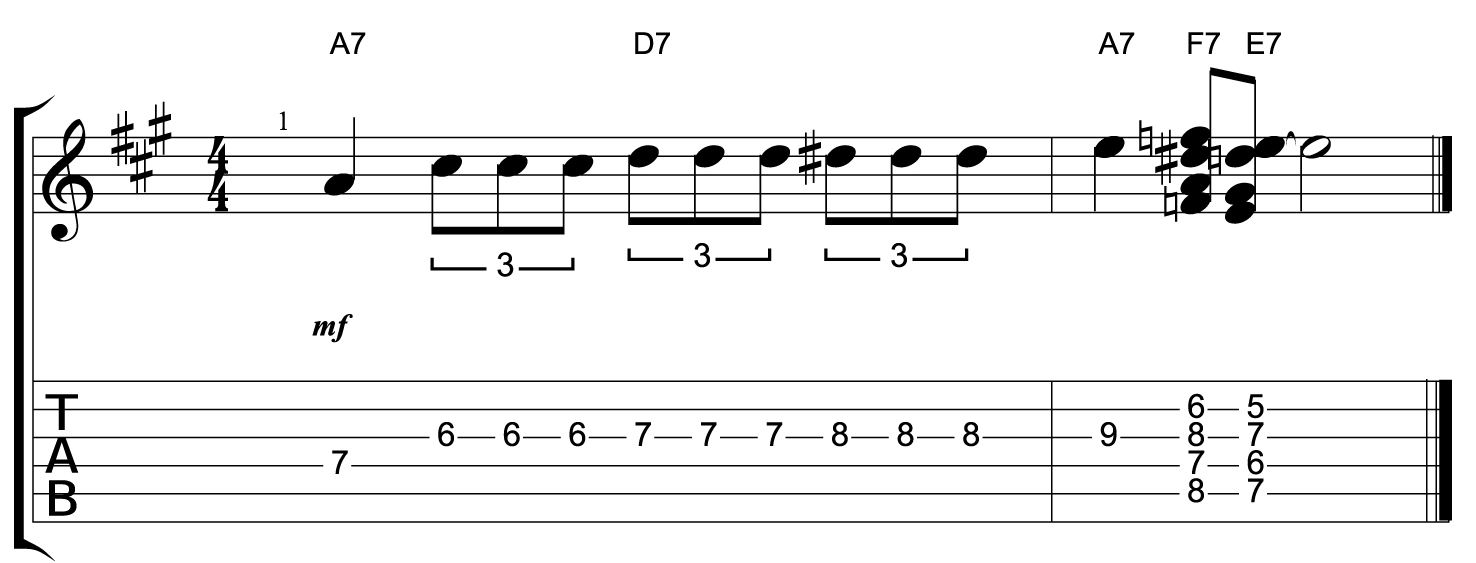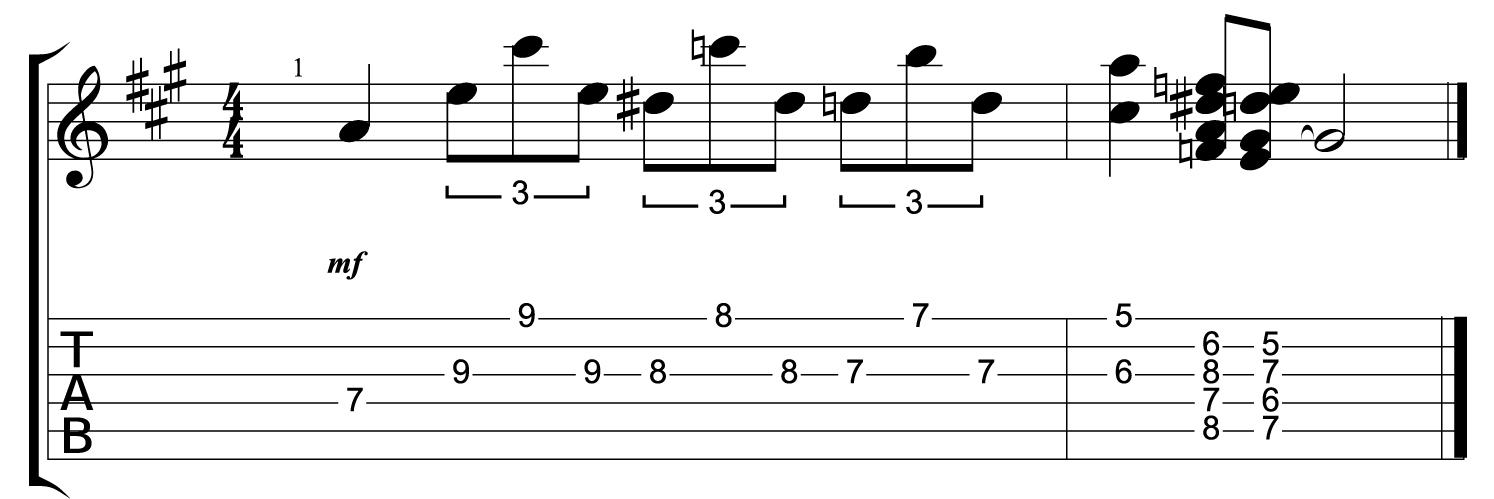
Blog
Aug 10 2015 |
Blues TurnaroundsBy: Frank Macri Posted in: Blues Guitar Lessons One element that all blues progressions have in common is the turnaround. The turnaround is the last two bars of the progression, where the tune gets ready to “turnaround” and go back to the beginning. Lets set the framework with Figure A, a 12-bar blues in the key of A with a common turnaround. What makes the turnaround especially challenging is that the player must compose a strong finishing statement. It must be solid, both rhythmically and melodically, to wrap up the solo and get ready for the next section, be it a vocal chorus or another solo. The solution to this problem is to memorize several turnaround licks that will allow you to pull one out of your repertoire when needed. Lets examine a few of these phrases. It can be made more interesting by replacing the middle note of each triplet with the root (A) as in Figure C. Figure D moves from the minor seventh (G) down to the perfect fifth (E); the pick has to jump from the fourth to the first string. This turnaround, a trademark of Robert Johnson, was later used by Eric Clapton. Muddy Waters used Figure E frequently. Note that this phrase has two lines moving in harmony. Now take that lick, add an A note on top, and you have a “piano-style” turnaround (Figure F). (In order to pick this properly, use the pick on the lowest note and the second and third fingers of your picking hand on the higher notes.) Figure G depicts two lines moving in opposite directions for an interesting effect. The final example, Figure H is one of the most common turnaround licks of all. Once you understand the relationship between the notes of each lick and the notes of the I chord, you’ll find it easy to move any of these turnarounds to any desired key. |














